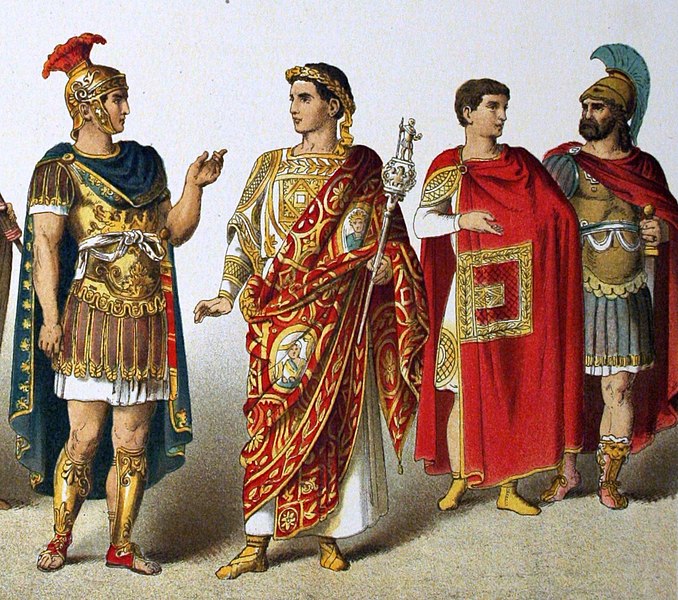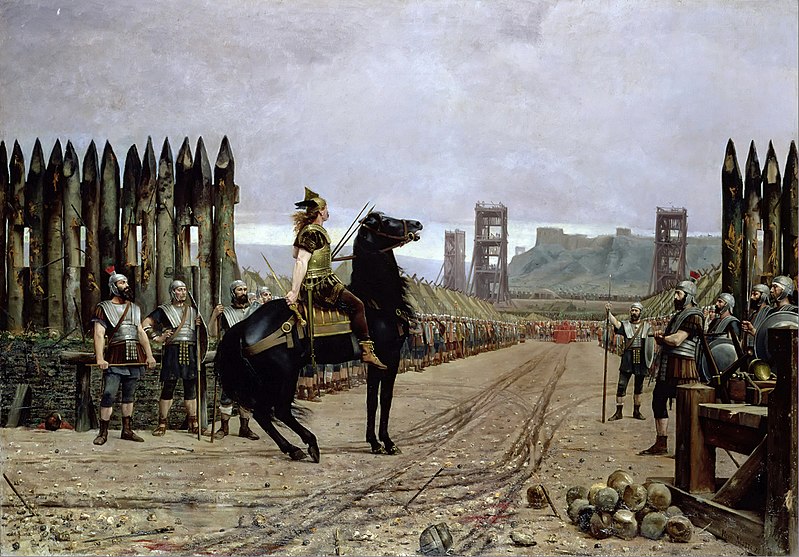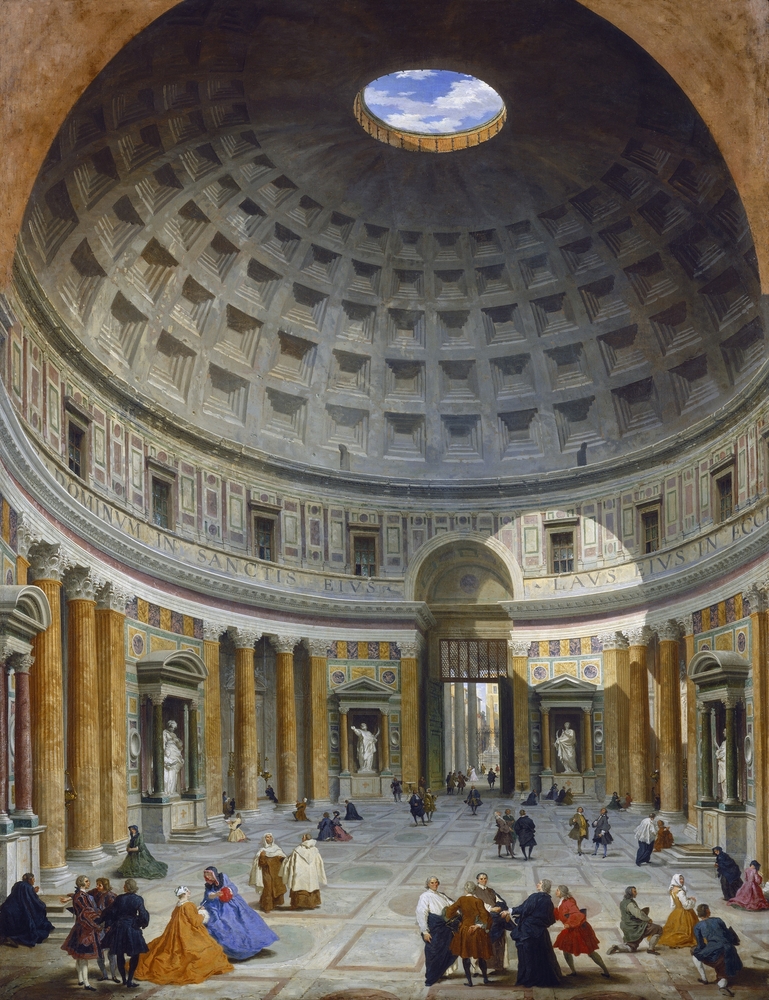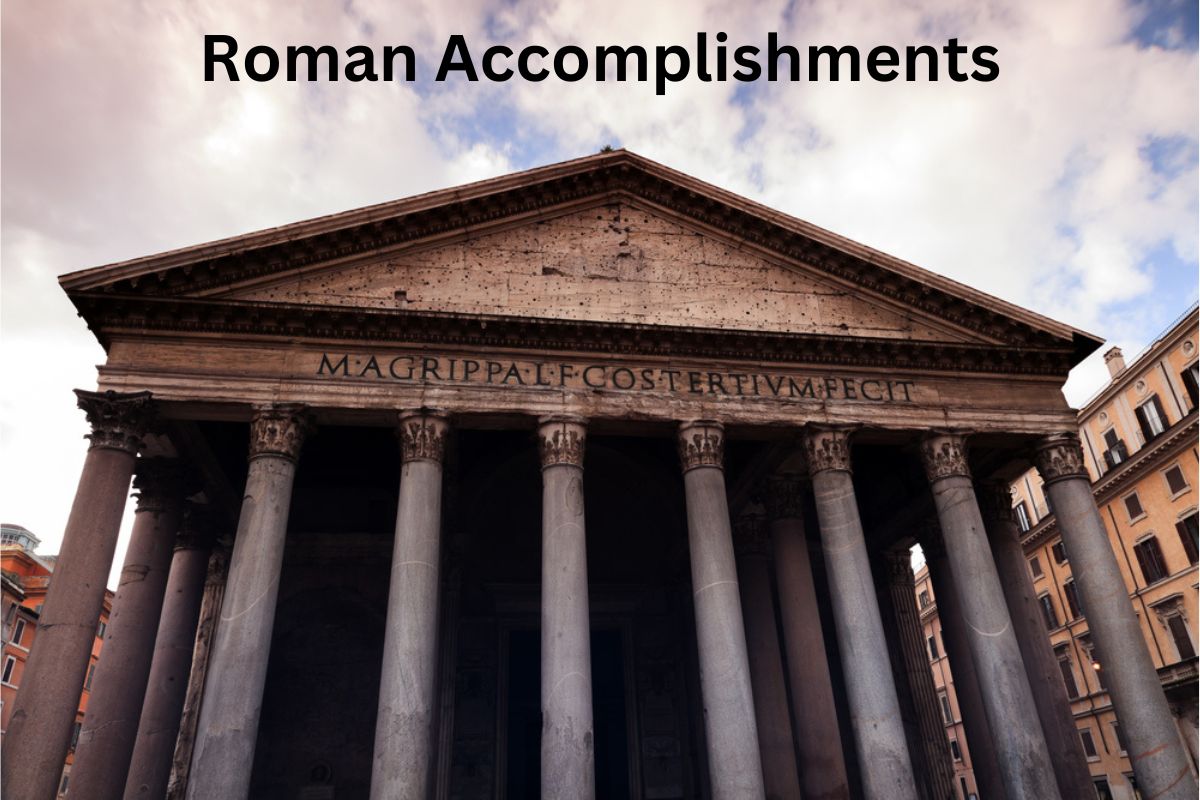The Romans achieved numerous remarkable accomplishments throughout their expansive empire. From engineering marvels to legal advancements, their contributions left a lasting impact on various aspects of human civilization.
Their extensive road network facilitated trade and communication, while their impressive aqueducts ensured a reliable water supply. The Romans also established a sophisticated legal system that laid the foundation for modern jurisprudence.
Additionally, they introduced representative government, allowing citizens to participate in decision-making. Their architectural marvels, engineering techniques, and the development of Roman numerals further demonstrated their ingenuity.
Furthermore, Roman literature, philosophy, military tactics, and the spread of their culture and language left an indelible mark on the world. Together, these accomplishments showcase the enduring legacy of the Romans and their immense influence on the development of human civilization.
Accomplishments of Ancient Rome
1. Extensive road network
The Romans constructed an extensive network of roads that spanned across their vast empire. These roads were a remarkable feat of engineering, designed to connect major cities, military outposts, and trade routes.
The construction of these roads, known as “Viae Romanae,” involved meticulous planning and precise engineering techniques. They were primarily built using layers of gravel, sand, and compacted soil, topped with large paving stones.
Also Read: Facts About Ancient Rome
The roads played a crucial role in facilitating trade, allowing the efficient movement of goods and resources. They also enabled the rapid deployment of Roman legions and improved communication throughout the empire.

2. Impressive aqueducts
One of the most remarkable engineering achievements of the Romans was the construction of aqueducts. These structures were designed to transport water from distant sources to cities, ensuring a reliable water supply for various purposes.
Aqueducts consisted of a system of channels, tunnels, and arches that allowed gravity to carry water from elevated sources to lower-lying areas. The construction of aqueducts required careful planning, precise surveying, and advanced engineering techniques.
The Romans built numerous aqueducts throughout their empire, with some of the most famous examples being the Pont du Gard in France and the Aqueduct of Segovia in Spain.
These impressive structures not only provided water for drinking and sanitation but also supplied public baths, fountains, and gardens, enhancing the quality of life in Roman cities.

3. Sophisticated legal system
The Romans developed a sophisticated legal system that greatly influenced the development of law in Western civilization. They established principles and concepts that formed the foundation of modern legal systems.
Roman law was based on the idea of justice, fairness, and the rule of law. It emphasized the importance of written laws and legal procedures, ensuring that everyone was subject to the same laws and entitled to a fair trial.
Roman legal principles, such as “innocent until proven guilty” and “equality before the law,” were revolutionary concepts that continue to shape legal systems today.
The Romans also established a system of courts, judges, and legal professionals, creating a framework for the administration of justice. Their legal system contributed to stability, consistency, and predictability in Roman society, setting a precedent for the development of legal systems in later civilizations.
4. Representative government
The Romans established the Roman Republic, which was characterized by a system of representative government. In this system, eligible male citizens had the right to vote and elect officials to represent their interests.
The Roman Republic was divided into various political offices and assemblies that had specific roles and responsibilities. The most important decision-making body was the Senate, consisting of appointed senators who advised and influenced the government.
Additionally, there were popular assemblies where citizens could participate in decision-making through voting on laws and policies.
This system of representative government marked a significant departure from the autocratic rule prevalent in many ancient societies and laid the groundwork for later democratic systems.
5. Architectural marvels
The Romans were renowned for their architectural achievements, which still stand as testament to their ingenuity and grandeur. They constructed iconic structures like the Colosseum, a massive amphitheater used for gladiatorial contests and public spectacles.

The Pantheon, with its impressive dome, showcased their mastery of concrete and architectural design. Roman architecture featured elements such as arches, vaults, and domes, which allowed for larger and more durable structures. They incorporated Greek architectural influences while also introducing their own innovations.
Roman buildings served various purposes, including religious, governmental, and recreational. Their architectural accomplishments not only provided functional spaces but also became enduring symbols of Roman power, engineering prowess, and cultural legacy.
6. Advancements in engineering and construction techniques
The Romans made significant advancements in engineering and construction, which played a crucial role in their architectural achievements. They developed techniques such as the use of concrete, which revolutionized construction methods.
Roman concrete, made from a mixture of volcanic ash, lime, and aggregate, was incredibly strong and versatile. It enabled the Romans to build structures with large spans, such as bridges and domes, while also allowing for intricate architectural details.
The development of arches and vaults further enhanced their construction capabilities, providing stability and supporting the weight of massive structures. The Romans also employed sophisticated surveying techniques and construction equipment, including cranes, hoists, and pulleys, to facilitate large-scale building projects.
Their engineering and construction innovations not only shaped the physical landscape of the Roman Empire but also influenced subsequent architectural and engineering practices.
7. Roman numerals
The Romans developed a numeral system that utilized combinations of letters to represent numbers. This system, known as Roman numerals, played a significant role in the Roman culture and continued to be used throughout the empire and beyond.
Roman numerals employed a combination of seven letters: I, V, X, L, C, D, and M, representing the numbers 1, 5, 10, 50, 100, 500, and 1000, respectively. By combining these letters and their placement, various numbers could be represented.
Roman numerals were widely used in official documents, inscriptions, and public displays. They continue to have a presence in modern society, often seen on clocks, buildings, book chapters, and as decorative elements in art and design.
8. Contributions to literature and philosophy
Roman writers and philosophers made significant contributions to literature and philosophy, leaving a lasting impact on Western intellectual thought. Prominent figures such as Virgil, known for his epic poem “The Aeneid,” became highly influential in shaping Roman literature.
The works of Roman playwrights such as Terence and Plautus contributed to the development of theater. In philosophy, notable Roman thinkers like Seneca, Marcus Aurelius, and Cicero explored a range of philosophical ideas, addressing topics such as ethics, politics, and the nature of the universe.
These literary and philosophical works not only reflected the intellectual climate of the time but also provided valuable insights into human nature and the challenges of life.
9. Military tactics
The Romans were renowned for their military prowess and developed highly effective military tactics. One of their key innovations was the organization and deployment of the Roman legion, a large, well-trained military unit consisting of thousands of soldiers.
The legions employed disciplined formations, such as the famous “testudo” or tortoise formation, where soldiers interlocked their shields to create a protective shell. This provided them with exceptional defensive capabilities against missile attacks.
The Romans also excelled in siege warfare, constructing sophisticated siege engines and techniques to breach fortified walls. Their military success can be attributed to meticulous planning, training, and discipline, making them one of the most formidable military forces of their time.
10. Spread of Roman culture and language
The Romans had a profound impact on the cultural landscape of their empire. Through conquest and assimilation, they spread their language, Latin, across vast territories. Latin became the language of administration, governance, and communication in the Roman Empire, and its influence extended far beyond the decline of the empire itself.
Latin later evolved into the Romance languages, including Italian, Spanish, French, Portuguese, and Romanian, which are still spoken by millions of people today. Additionally, Roman culture, including their architectural styles, legal system, and customs, influenced the regions they conquered.
Roman infrastructure, such as roads and aqueducts, continued to serve as a foundation for subsequent civilizations. The spread of Roman culture and language played a significant role in shaping the development of Western civilization and its legacy continues to be felt in various aspects of contemporary society.
